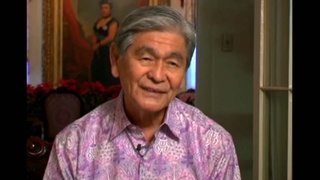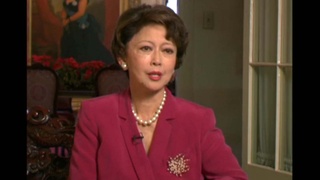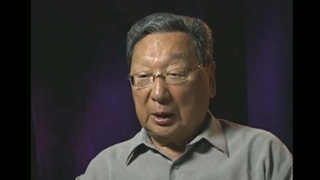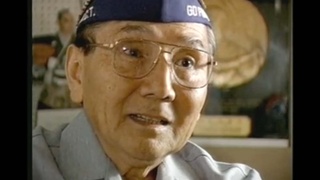Interviews
Anti-Japanese sentiment at the time of World War II
I*: Were you still in, at university when the war started?
Yes, I was at university when the war started, and at that time, at that time there was a lot of discrimination news in the papers, and usually it was from two politicians, and I guess it was because the Japanese didn't have the franchise in those days. One was Alderman Halford Wilson in the city council, and he was always saying something anti-Japanese, and the other was Howard Green, he was a conservative MP in Ottawa. And the reason I remember him 'cause he was a prominent United Church member and very prominent in the, in the news for the church things and the... then in the paper, he was always in the, saying something about the anti-Japanese in Ottawa in the parliament. But counteracting that, not many people, politicians spoke up for the Japanese, but there was a, when I was going to the university, there were a professor named Henry Angus, and he was, in his very thoughtful way, encouraged the students to ignore the anti-Japanese feelings in those days, and he really encouraged the Nisei students at university to, to go about their studies and try to not get too discouraged over the discrimination.
I: What do you remember about the start of the war? At the start of the war, I remember that we were all expected to go into the Canadian Officers' Training Corps at the universities, and we were all handed uniforms. And every, every... well, two or three times a week we went on marches and different exercises that we had to do, and did what we called some military training. There was a Colonel Shrum, he was a Physics professor, he was a colonel, and he was the head of the Canadian COTC training at the University of British Columbia.
*"I" indicates an interviewer (Teri Yamada).
Date: September 24, 2004
Location: Toronto, Canada
Interviewer: Teri Yamada
Contributed by: Sedai, the Japanese Canadian Legacy Project, Japanese Canadian Cultural Center
Explore More Videos

Prom during the war
(b.1926) Democratic politician and three-term Governor of Hawai'i

Neighbors' sympathy after Pearl Harbor
(1915 - 2011) Nisei florist who resettled in New York City after WW II. Active in Japanese American civil rights movement



Interest in Japanese migration studies (Japanese)
Tsuda College President, researcher of Nikkei history

Learning from Nikkei (Japanese)
Tsuda College President, researcher of Nikkei history

Japanese Canadians get the right to vote in 1949
(b. 1928) Doctor. Former Chair of the Japanese Canadian Redress Foundation.

Life in camp as teenager
(1926 - 2012) Scholar and professor of anthropology. Leader in the establishment of ethnic studies as an academic discipline

Memories of my infancy: Japanese 1, Japanese 2… (Spanish)
(b. 1932-2016) Peruvian painter

Mistreating the Japanese community (Spanish)
(b. 1932-2016) Peruvian painter


Being ordered to keep a diary that was later confiscated, ostensibly by the FBI
Hawaiian Nisei who served in World War II with the 442nd Regimental Combat Team.

Bombing of Pearl Harbor
An expert researcher and scholar on Japanese immigrant clothing.

Helping soldiers
An expert researcher and scholar on Japanese immigrant clothing.

Fun at concentration camp
Senshin Buddhist Temple minister and co-founder of Kinnara Taiko.
